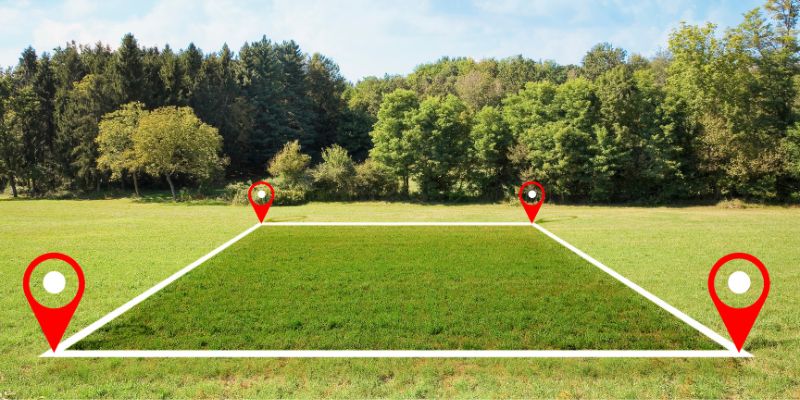How Much Are Land Taxes In Europe?
Land taxes in Europe can be a significant expense for property owners, but we must remember that Europe is just a union, and rates and rules differ widely from country to country. A property's location, its size and type, and specific local laws all play a role in determining how much you'll pay. In this guide, we'll explore the basics of land taxes in some European countries, compare tax rates, and many other details. So, let's get started without wasting any time.
Definition Of Land Taxes
Land taxes are payments made by property owners to the government for owning land or property. Unlike other property-related taxes, such as income tax from renting property or transfer taxes when buying or selling, land taxes apply just for holding the property. They are an ongoing cost for landowners and help fund public services like schools, roads, and local government activities.
Factors That Influence Land Tax Rates
Several factors can affect how much you pay in land taxes. The value of the land is the no.1 factor. Land in high-demand areas (like city centres, main malls, etc.) often has higher taxes than rural areas (villages, underdeveloped towns, etc.). The land size also plays a role, as more significant properties may have higher rates.

Additionally, local government policies influence land taxes. Some governments might offer lower rates to promote investment or development in certain areas. These rules are different for every country and even within regions of the same country, so it’s important to check local laws when calculating potential costs.
Average Land Tax Rates In European Countries
High-Tax Countries
Some European countries, including France, Germany, and Italy, have high land tax rates. These countries often have higher taxes because of strong social welfare systems and a need to fund public services. In countries like France, local taxes are based on the size and value of land, and additional taxes are added to support infrastructure and services. Similarly, the governments of Germany and Italy use land taxes to fund schools, healthcare, and local projects. These two countries have incredibly high land tax rates and possibly higher in urban areas where land value is high.
Low-Tax Countries
Countries like Estonia, Bulgaria, and Ireland tend to have low land tax rates. Right now, the rates are low to encourage investment in the country so they can grow economically.
For example, Estonia offers low taxes to attract businesses and individuals, promoting development and employment. Bulgaria has minimal land taxes, which helps stimulate growth in rural areas. Ireland also keeps taxes low, focusing on encouraging foreign investments. These countries may offset the lower land taxes with other forms of taxation, such as corporate or income taxes.
Countries With No Land Taxes
In some cases, countries do not have direct land taxes. Monaco and Switzerland have special rules where land taxes are not levied on ownership. Instead, these countries utilize other areas to receive taxes and fees from the general public. However, they still attract property investors looking for favourable tax conditions.
How Land Taxes Are Calculated In Europe

Common Methods Of Calculation
There are two main methods of Land tax calculation in Europe:
1. Percentage of land value
2. Fixed rates per square meter.
In many countries, land tax is a percentage of the land's value, often assessed by local authorities. For example, in France and Germany, they (the officials) evaluate the tax value based on what price the land would go for if you were to sell it. The higher this value is, the more you pay in taxes.
The second standard method charges a fixed rate per square meter of land. This straightforward approach is used in countries like Italy, where the size of the land directly affects the tax owed.
Role Of Local Governments
The national laws provide a framework, while the individual regions, cities, and municipalities can adjust rates based on local needs.
In Germany, for example, the land tax rates vary between big cities and underdeveloped rural areas. Urban areas have higher rates mainly due to the increased infrastructure and facilities available.
In contrast, rural areas have lower rates to encourage development and reduce financial burdens on property owners. This enables local governments to adapt tax policies based on the needs of the people in the locality.
Conclusion: Process Of Land Taxes In Europe & Consequences Of Delay
Many European countries collect Land taxes annually or semi-annually (once or twice a year). However, this often differs between countries and local governments. These are usually paid via any source, be it government websites to make payments online, banking for transfer purposes, or personally visiting local tax offices and spending there.
If land taxes are not paid on time, penalties and interest charges can be imposed. Therefore, property owners should pay taxes on time and resolve all issues promptly to avoid severe consequences.
Related Posts
- 5 Simple Strategies To Manage And Reduce Financial Stress
- Green Investments: How To Align Your Portfolio With Your Values
- How Much Are Land Taxes In Europe?
- 7 Effective Ways To Build Credit Using Your Credit Card
- What States Have No Taxes On Airplane Tickets?
- Top 8 Strategies To Succeed In A Debt Management Program